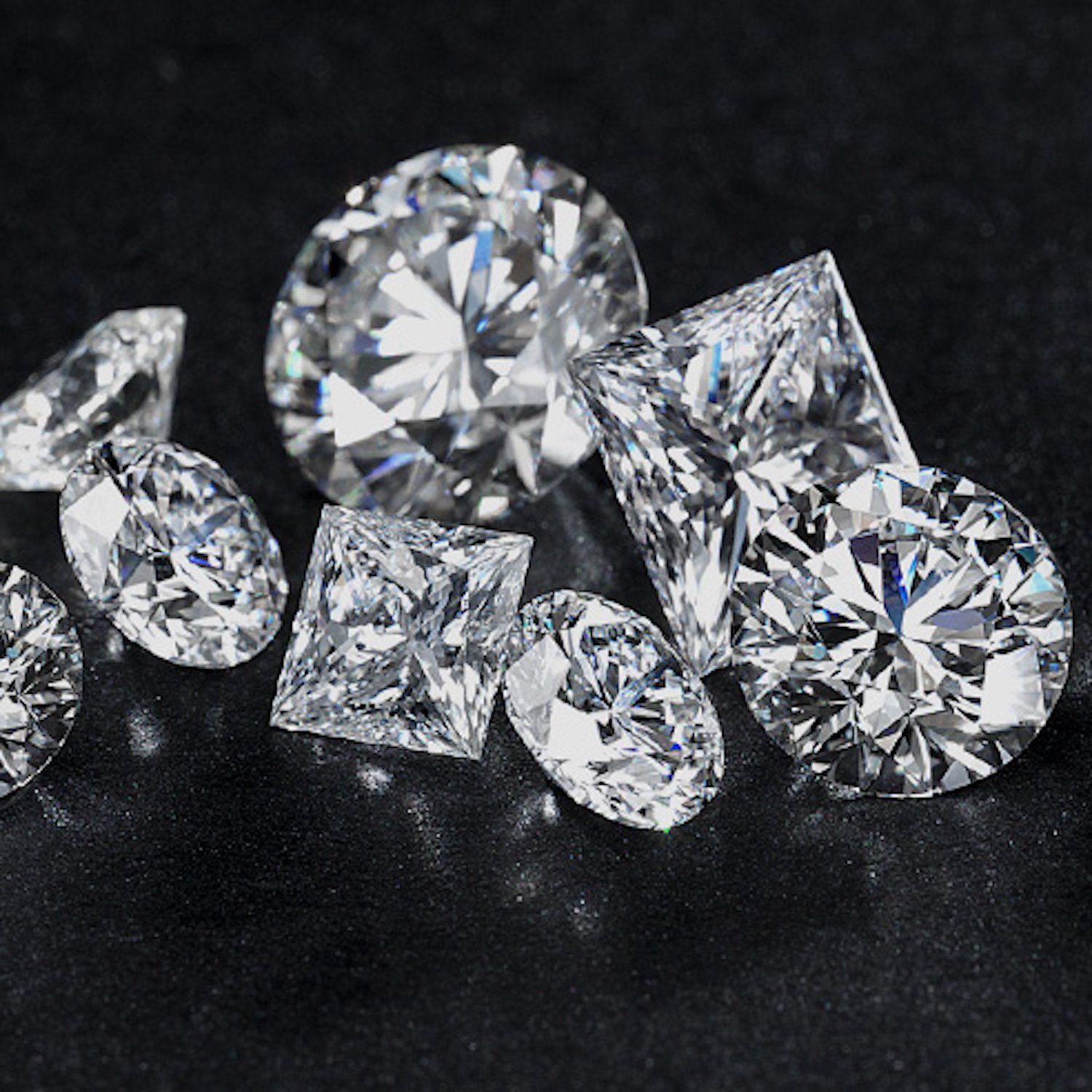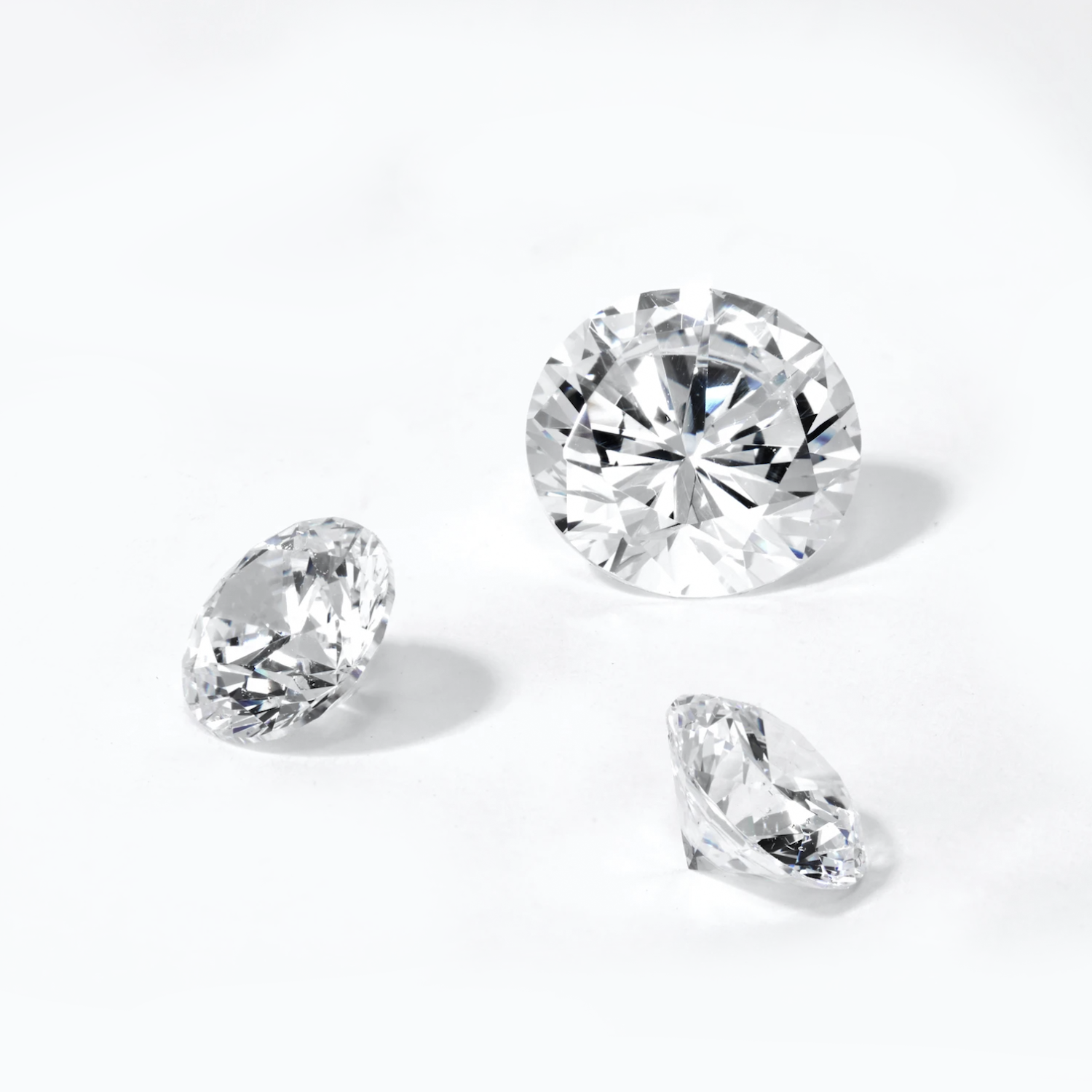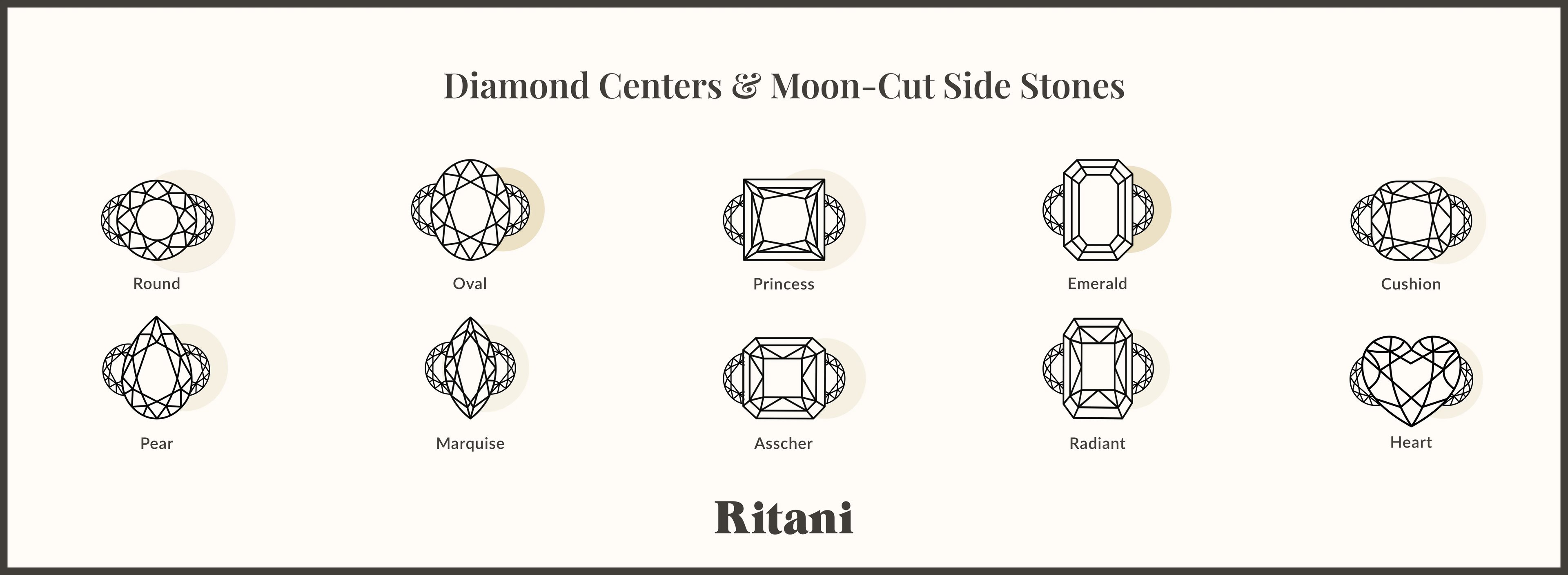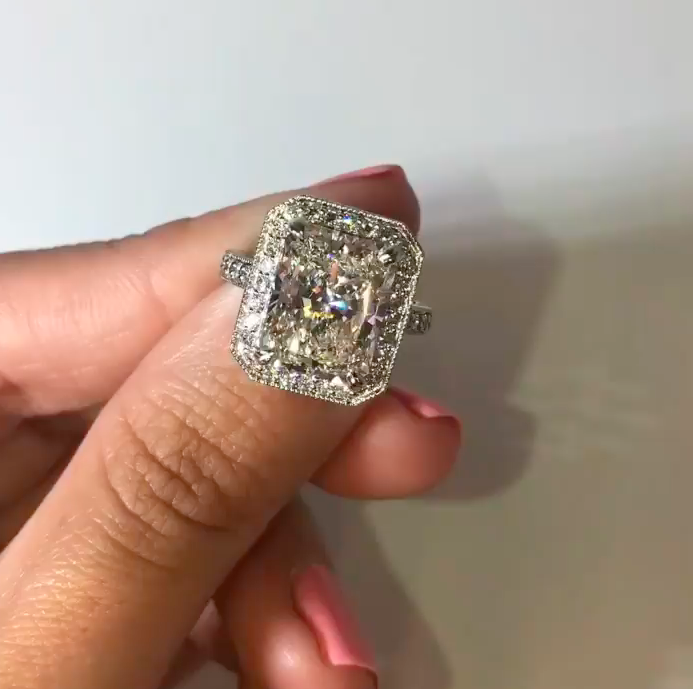Diamond Inclusions and Blemish Guide

Diamond clarity is the second most important factor in determining a diamond’s price, after cut. Yes, a diamond’s cut is crucial to the stone’s sparkle and overall price, but clarity has a huge impact as well. For example, consider the price difference between two extremely similar round cut diamonds. This diamond is an Ideal cut, but its clarity grade is SI1:

Price: $3,702
And here is another round cut diamond – same carat weight, same color. Note that it has a lower cut grade than the previous diamond (Good), but a higher clarity grade (VVS1):

Price: $4,556
You can see the importance of diamond clarity reflected in the dramatic price difference between these two stones.
What affects a diamond’s clarity, then? That would be inclusions and blemishes. What exactly are inclusions and blemishes? Find the answer to this question and more below.
What are inclusions and how are they formed?
An “inclusion” is the industry term for any internal diamond anomalies, and “blemish” is the term used for the external. I avoid the term “flaws” when discussing inclusions, because every diamond has them to some extent. What matters is how visible they are, and how many.
Diamond inclusions form naturally during a stone’s transformation from carbon to a rough diamond. Contrary to popular belief, inclusions are not the result of a diamond cutter’s mistake.
Which diamond inclusions are the most & least common?
The most common diamond inclusions you will see are pinpoints and feathers. Pinpoints are basically the blackheads of diamonds; they appear as tiny dots on a diamond’s “face”, called the table. Another common inclusion is the feather, which is an internal diamond crack. With feathers, there are often concerns about a diamond’s durability. However, a feather inclusion should not be cause for worry unless it runs most of a stone’s length or if it reaches the surface of the diamond.
The least common diamond inclusion you will see is a cavity. A diamond cavity is a minuscule hole, just like a cavity in your teeth. The reason that diamond cavities are so uncommon is that stones with too many or too large of this type of inclusion will be designated as industrial-grade rather than gem-grade. So, unless you’re examining a lot of diamond-tip saws and drill bits, you won’t see very many diamonds with cavity inclusions.
What general rules do graders use to determine diamond clarity?

A sample inclusion plotting chart. Photo credit: GIA.
Diamond graders at labs such as the GIA and AGSL do use a set of general priorities to determine how seriously a stone’s inclusions will affect its grade. First, a diamond grader will look at the inclusion’s size. Naturally, an enormous inclusion that takes up most of the diamond’s table will be more detrimental to the stone’s clarity grade.
The second priority is how many, and the range of different kinds, of visible inclusions a diamond has. If a diamond’s table is riddled with clouds (groups) of pinpoints, feathers, and crystals, it will receive a lower clarity grade.
The third consideration is the position of the diamond inclusion. Diamonds are graded from the top down, at 10x magnification. If a diamond has an inclusion on the bottom of its pavilion rather than the table, the inclusion will be less important to the clarity grade.
Fourth priority is given to the nature of an inclusion. By nature, I mean whether the diamond’s anomalies are internal or external. External inclusions are much more visible, and thus more harmful to a diamond’s clarity grade. However, a diamond with only external inclusions can still be graded as Internally Flawless.
Only diamonds with no blemishes or inclusions (visible at 10x magnification, that is) can receive an overall clarity grade of Flawless.
Will some diamond inclusions devalue a stone more than others?
External blemishes have more of an impact on diamond grade and price than internal inclusions. Something like a chip or break is much more obvious to the eye, and thus worse for a stone’s clarity grade. However, these blemishes are rare and usually occur after the diamond has been cut and graded. Chips and breaks can happen as a result of poor ring setting or everyday damage. Diamonds may be the hardest material, but a tough hit against a sink or countertop can still chip them.
Is there any way to lessen the appearance of an inclusion?
Of course! Certain cuts and ring settings will hide the appearance of diamond inclusions. Many-faceted diamond shapes – such as round and princess cuts – are especially good for obscuring inclusions on the diamond’s table. A ring with a prong setting will hide an inclusion on the diamond’s girdle, and bezel settings will hide inclusions on the pavilion.
On the other hand, diamond cuts with step-cut facets are more likely to show inclusions. Examples include emerald and asscher cut diamonds.
What are the main points everyone should know about diamond inclusions?

A VVS2 asscher cut diamond from Ritani. Can you spot the pinpoints toward the bottom of the table?
- It’s important to remember that all internal diamond inclusions – and most external inclusions – are completely natural and part of every diamond.
- Most Ritani loose diamonds have clarity grades of VS1 or VS2, which stands for very slightly included. Overall, most GIA-certified diamonds have clarity grades in this range.
- You don’t have to worry about finding an inclusion on your diamond that you were unaware of. If you choose a diamond seller that has high-quality imagery and GIA-certified diamonds, you won’t be surprised by any inclusions. The GIA plots out all of a diamond’s inclusions on its grading report. At Ritani, we provide both 10x-magnified head-on shots of our diamonds, as well as 360-degree videos, so you can get a comprehensive picture of each stone and its inclusions.


